Cell movement is a complex phenomenon that is fundamental to many physiological and disease processes. It has been the subject of study for more than 200 years, and yet we still do not fully understand this process. Cell movement consists of four steps; protrusion and adhesion formation at the front followed by contractile force generation and detachment at the rear. Much is known about the molecular mechanisms underlying these steps however, it is not clear how they are integrated at the cellular level. Part of the problem is the incorporation of a vast amount of molecular and biophysical data into a basic working model of motility. A promising solution to this problem is the combined approach of mathematical modeling and experimentation, using the fish epithelial keratocyte as a model system. The goal of this review is to illustrate, using examples, how the reciprocity between experimentation and modeling can provide new insights into the mechanism of cell motility. Several modeling approaches are described including: conceptual models, “bottom-up” models based on molecular dynamics, and “top-down” models that consider cell shape and movement. The Graded Radial Extension (GRE) model forms the basis of a several mathematical models, from a simpler 1D model that links actin filament dynamics to cell shape, to more complex 2D and 3D simulations of keratocyte movement. Together these models suggest that cell movement emerges from the mechanical interaction between different sub-processes of motility, namely, the treadmilling actin meshwork, the plasma membrane, adhesion turnover and contractile force generation. In addition, the feedback regulation between these sub-processes is important for the robust, self-organizing nature of movement.
1.
Introduction
This is a study of fixed point theory for integral equations including fractional quadratic [1] equations of the form
which are known to model a number of important problems in applied mathematics. A good discussion of these equations along with extensive references is found in Darwish [2] and later in Darwish and Henderson [1].
Those problems are challenging because of the product term
and the fact that $ f(t, x(t)) $ spoils the property that the integral would map bounded sets of continuous functions on an interval $ [0, E] $ into an equicontinuous set.
Along with the integral equation (1.1) there can be found much literature on the parallel integro-differential equation
In the search for existence and uniqueness properties of (1.1) we find assumptions that $ g $ is a contraction, while $ f $ and $ v $ are Lipschitz in $ x $, among other severe restrictions on the magnitude of that product term. We would expect as much for (1.2), but here is where the surprise and contrast is found.
Using a technique which we call "direct fixed point mappings" introduced some decades ago, we convert (2.1) into a form in which $ g, f, v $ have all become contractions in the derivative of $ x $ on short intervals. Then we use a technique which we call "progressive contractions" to make the product term a contraction with sufficiently small contraction constant that on repeatedly short intervals the entire equation is a contraction and we obtain a unique solution (of the derivative) on $ [0, E) $. Denoting the derivative of $ x $ by $ \phi $ we then have the unique solution given as
on $ [0, E] $. This is then parlayed into a unique solution on $ [0, \infty) $. We had introduced this method for integro-differential equations without the coefficient function $ f $ in [3].
2.
Inversion of (1.2) and assumptions
The equation with which we deal is a bit more general than (1.2) and is
We will use it to define a fixed point mapping to prove that there is a unique solution on $ [0, \infty) $. To invert this into a mapping equation we define a new function $ \phi $ by the relation
so that $ x^{\prime }(t) = \phi (t) $ and (2.1) becomes
The natural mapping defined by (2.3) is called a direct fixed point mapping. Our problem now is to find a unique fixed point of this mapping on $ [0, \infty) $.
Notice that if we find $ \phi $ then (2.2) will define a solution of (2.1). Moreover, if there are two solutions of (2.1) with continuous derivatives, then those derivatives satify (2.3) contradicting uniqueness.
Since we are looking for solutions of (2.1) which are continuous on intervals $ \left[0, E\right] $, it is natural to reqiure that $ g $, $ f\in C\left(\left[0, E\right] \times \Re \right) $ and the integral $ \int_{0}^{t}A(t, s)v(t, s, x(s))ds $ be a continuous function on $ \left[0, E \right] $ when $ x\in C\left(\left[0, E\right] \right) $. However, the latter requirement allows $ A $ and $ v $ to have singularities as long as condition (2.7) is satisfied.
We assume that for each fixed $ E > 0 $ there exist positive constants $ \alpha _{E}, K_{E} $, $ r_{E} $, $ M_{E} $ and a function $ L_{E}:\left\{ 0 < s < t\leq E\right\} \rightarrow \Re $ so that if $ \left\vert x\right\vert, \left\vert y\right\vert \leq r_{E} $, then
and
We will see that because of (2.2), all of these Lipschitz type conditions (2.4)–(2.6) will become contractions when we divide the interval $ [0, E] $ into sufficiently short intervals by
for $ T $ small enough and $ n\in \mathbb{N} $ with $ nT = E $ defined by (4.1), below.
The natural mapping defined by (2.3) will be a contraction $ P_{1} $ on $
[0, T_{1}] $ and there will be a unique fixed point $ \xi _{1} $ on that interval.
We will then take the complete metric space of continuous functions $ \phi $ on $ [0, T_{2}] $ satisfying $ \phi (t) = \xi _{1}(t) $ on $ [0, T_{1}] $. The natural mapping $ P_{2} $ defined by (2.3) on $ [0, T_{2}] $ will again be a contraction with a unique fixed point $ \xi _{2} $ agreeing with $ \xi _{1} $ on $ [0, T_{1}] $.
Continuing in this way we obtain a unique continuous solution $ \xi $ on $ [0, E] $. Now, to obtain a solution on $ [0, \infty) $ we let $ E = 1, 2, ..., n $ and obtain solutions $ \phi _{i} $ on $ [0, i] $ which we then extend to $ [0, \infty) $ by letting $ \phi _{i}(t) = \phi (i) $ for $ t\geq i $. This sequence of functions converges uniformly on compact sets to a continuous function $ \phi $ on $ [0, \infty) $ which solves (2.3) because each $ \phi _{i} $ solves (2.3) on $ [0, i] $.
Remark 2.1. If $ L_{E} $ is continuous on the set $ J: = \left\{ 0\leq s\leq t\leq E\right\} $ and $ A\left(t, s\right) = A\left(t-s\right) $ with $ \left\vert A\right\vert $ integrable on $ \left[0, E\right] $, then condition (2.7) is satisfied, since
Note that integrability of $ \left\vert A\left(t, s\right) \right\vert L_{E}\left(t, s\right) $ on $ \left[0, t\right] $ for $ t > 0 $ does not imply (2.7), as may easily be verified when $ A\left(t, s\right) = \left(t-s\right) ^{q-1} $, $ L\left(t, s\right) = s^{p-1} $ with $ 0 < p, q $ and $ p+q < 1 $.
3.
Creating building blocks for contractions
In this section we will see that each of the three terms on the right-hand-side of (2.3) is a contraction if the interval is sufficiently short, that the product is a contraction if the functions $ f $ and $ v $ are bounded; moreover if the interval is sufficiently short and if the functions $ f $ and $ v $ are bounded, then (2.3) defines a contraction.
To understand what must be done, we consider the mapping $ P $ of the Banach space $ (\mathcal{B}, \Vert \cdot \Vert _{E}) $ of continuous functions $ \phi :[0, E]\rightarrow \Re $ with the supremum norm as the natural mapping defined by (2.3). Thus, if $ \phi, \psi \in \mathcal{B} $, then we have
When we examine the last two lines we realize that we have a product of two terms each of which could be a contraction if the interval is sufficiently short. We had introduced this work by dividing $ [0, E] $ into $ n $ equal segments of length $ T $. The idea is to use the integrals to make the terms contractions by taking $ T $ small. We need to prove an unusual type of theorem stating that the product of two contractions is a contraction if the mapping functions are bounded and the interval is sufficiently short. Google reveals that there is some literature on this, but it seems to be quite different than what is needed here.
Now in the lemma and its proof below, $ \Vert \cdot \Vert $ will always denote the supremum on $ [0, T] $ and recall that (2.7) holds.
Lemma 3.1. Let $ E > 0 $, $ G_{E}\subset (\mathcal{B}, \Vert \cdot \Vert _{E}) $ and $ m, h:G_{E}\rightarrow \mathcal{B}_{E} $ be such that $ \left\Vert m\left(G_{E}\right) \right\Vert, \left\Vert h\left(G_{E}\right) \right\Vert \leq Q $, for some $ Q > 0 $. Assume that for the given $ E > 0 $ there exist $ \alpha > 0, \beta > 0 $ such that, if $ 0 < T\leq E $ and $ \phi, \psi \in G_{E} $, then
and
Under these conditions if $ H(\phi) = h(\phi)m(\phi) $, then
Proof. We have, for $ 0 < T\leq E $ and $ t\in \left[0, T\right] $,
from which (3.2) follows.
We will now show that every term in (3.1) satisfies a Lipschitz condition with constant containing $ T $ as a factor. When we are working on $ [0, T] $, we always denote by $ \Vert \cdot \Vert $ the supremum on $ [0, T] $.
First, if $ \phi, \psi :[0, T]\rightarrow \Re $, then
Next,
Then,
Now we want to show that the product of the functions generating (3.4) and (3.5) is a contraction, again with the coefficient $ T $ as a factor of the contraction constant. Going back to Lemma 3.1, we see that we will need to ask that $ f $ and $ v $ map $ G_{E} $ into $ G_{E} $.
The Lipschitz condition controls growth rate so that a solution will not experience finite escape time and this is so important because there are no sign conditions. It also ensures uniqueness of solutions. The single property that seems unfortunate is the existence of the bound $ Q $ but it can be removed in the same way that so many fixed point theorems begin by requiring that the natural mapping maps a closed bounded convex set into itself. While that is a property which we cannot avoid, we note again that no sign conditions are demanded. In particular, the functions $ g $, $ f $, and $ v $ could all be combinations of $ \sin x(t) $ and $ \cos x(t) $.
4.
A unique solution
Our main result is the following theorem.
Theorem 4.1. Let $ E > 0 $ be arbitrary and assume that there exist a closed convex and bounded set $ G_{E}\subset \left(\mathcal{B}_{E}, \left\Vert \cdot \right\Vert _{E}\right) $, $ \left\Vert G_{E}\right\Vert \leq r_{E} $ such that $ P\left(G_{E}\right) \subset G_{E} $, and a $ \phi _{0}\in G_{E} $ with $ \int_{0}^{t}A(t, s)v(t, s, \phi _{0}\left(s\right))ds $ bounded on $ \left[0, E \right] $. If (2.4)–(2.7) hold, then the direct mapping (2.3) (and, consequently, equation (2.1)) has a unique solution on the interval $ [0, E] $. This is then parlayed into a unique solution on $ [0, \infty) $.
Proof. Let $ E > 0 $ be given. For our initial step we consider the space $ G_{1} $ of the restrictions of continuous functions $ \phi \in G_{E} $ on the set $ \left[0, T\right] $ (with $ T > 0 $ defined below) along with the corresponding sup-norm, and note that this is a complete metric space. Furthermore, by the continuity of $ f $, we have for any $ \phi \in G_{E} $ and $ t\in \left[0, E \right] $,
which implies that $ f\left(t, a+\int_{0}^{t}\phi (s)ds\right) $ is (uniformly) bounded for any $ \phi \in G_{E} $. Also, by (2.6) we have
so, in view of (2.7) we see that $ \int_{0}^{t}A(t, s)v\left(t, s, a+\int_{0}^{s}\phi (u)du\right) ds $ is (uniformly) bounded for all $ \phi \in G_{E} $. In terms of Lemma 3.1, if $ Q $ is a bound of $ \left\vert f\left(t, a+\int_{0}^{t}\phi (s)ds\right) \right\vert $ and $
\int_{0}^{t}A(t, s)v\left(t, s, a+\int_{0}^{s}\phi (u)du\right) ds $ for all continuous $ \phi \in G_{E} $, then we have
and
In view of (2.4), for the mapping $ P_{1} $ defined by (2.3) on the space $ G_{1} $, we take $ \phi, \psi \in G_{E} $ and $ t\in \left[0, T\right] $ to obtain
Thus, by (3.2) we have
The contraction constant for $ P_{1} $ of (3.1) is
for a sufficiently small positive number $ T $. This establishes the magnitude of $ T $ and a positive integer $ n $ which is chosen so that $ nT = E $ for some properly chosen positive integer $ n $. With such a choice, the mapping $ P_{1} $ is a contraction, so by the contraction principle, we have that $ P_{1} $ has a unique solution $ \xi _{1} $ of (2.3), which, in turn, yields a unique solution of equation (2.1) on $ [0, T] $.
If $ T = E $, then there is nothing else to prove, so we may assume that $ T < E $ and let $ (G_{2}, \Vert \cdot \Vert) $ be the complete metric space (with the supremum metric) of continuous functions $ \phi :[0, 2T]\rightarrow \Re $ which are restrictions on $ \left[0, 2T\right] $ of the elements of $ G_{E} $ and all satisfy $ \phi (t) = \xi _{1}(t) $ on $ [0, T] $. Let $ P_{2} $ be the mapping defined by (2.3) on the space $ G_{2} $.
Next, we want to compute (3.3), (3.4), (3.5) on $ [0, 2T] $ assuming that $ \phi (t) = \psi (t) = \xi _{1}(t) $ for $ 0\leq t\leq T $. We have for $ t\in \left[T, 2T\right] $,
which is the same constant as in (3.3).
In the same way with (3.4), we have
exactly as in (3.4). Finally for (3.5) (and keeping (2.7) in mind) we have
which is the same contraction constant as in (3.5).
Because of the way $ T $ was chosen, we again have that $ P_{2} $ is a contraction on $ G_{2} $ so it has a unique fixed point $ \xi _{2} $ agreeing with $ \xi _{1} $ on $ [0, T] $, which, in turn, is a unique solution of (2.1) defined on $ \left[0, T_{2}\right] $. In $ n-2 $ more steps we have a unique solution of equation (2.1) on $ [0, E] $.
To obtain a solution on $ [0, \infty) $, obtain solutions for $ E = 1, 2, ... $ named $ \phi _{1}, \phi _{2}, ... $ and continue each with a horizontal line from $ \phi _{i}(i) $ to $ \infty $. This set of functions converges uniformly on compact sets to a continuous function which is a global solution of (2.1). It should be noted that as $ E $ increases then $ T $ becomes smaller and $ Q $ becomes larger. But $ Q $ is always finite and $ [0, E] $ can always be divided into pieces of the appropriate length, $ T $.
Remark 4.2. The continuity of $ A(t, s)v(t, s, x) $ on $ \left\{ 0\leq s\leq t\leq E\right\} \times \left[-r_{E}, r_{E}, \right] $ yields a uniform bound of $ \int_{0}^{t}A(t, s)v(t, s, \phi \left(s\right))ds $ on $ \left[0, E\right] $ for all $ \phi \in G_{E} $. Note that if the constant function $ 0\in G_{E} $, then boundedness of $ \int_{0}^{t}A(t, s)v(t, s, a+\int_{0}^{s}\phi (u)du)ds $ is equivalent to boundedness of $ \int_{0}^{t}A(t, s)v(t, s, a)ds $.
Remark 4.3. In the special case that the kernel $ A $ is of fractional type as in (1.1), (1.2), i.e., $ A\left(t, s\right) = \left(t-s\right) ^{q-1} $ with $ 0 < q < 1 $, then a sufficient condition yielding (2.7) is that there exist a continuous function $ \ell :\left(0, \infty \right) \rightarrow \Re ^{+} $ and a $ p > 0 $ with
and such that
since in such a case, we have
and hence the function$ \int_{0}^{t}\left\vert A\left(t, s\right) \right\vert L\left(t, s\right) ds $ is continuous on $ \left[0, E\right]. $
Remark 4.4. The set $ G_{E} $ need not be a ball. For example, if $ \phi :\left[0, E\right] \rightarrow \Re ^{+} $ is continuous, then the set
is a convex, closed and bounded subset of $ \left(\mathcal{B}, \left\Vert \cdot \right\Vert _{E}\right) $. Indeed, if $ \left(x_{n}\right) \in G_{\phi } $ with $ x_{n}\overset{\left\Vert \cdot \right\Vert }{\rightarrow }x\in \mathcal{B} $ and $ \varepsilon > 0 $ is given, then for sufficiently large $ n $ we have for any $ t\in \left[0, E\right] $,
from which we have that
so $ x\in $ $ G_{\phi } $ and $ G_{\phi } $ is closed. It is bounded by the bound of $ \phi $ and it is convex since for any $ x, y\in G_{\phi } $ and $ \lambda \in \left[0, 1\right] $,
5.
Two classical PDEs, higher order
In this section we leave the product problem to concentrate more directly on higher order problems and examples that will not be over shadowed by the difficulties posed by products. Here we will go through the details of a second order problem in such a way that the reader will readily see how to proceed with third order and higher. Moreover, we will discuss two examples from the classical literature showing how this elementary method of direct fixed point mappings and progressive contractions simplifies the work in establishing unique solutions on $ [0, \infty) $.
We will note that the previous work simplifies and enhances some early work on partial integro-differential equations of Hyperbolic and Parabolic type. Two main examples are found in the fundamental treatise of Volterra [4,pp. 154-5]. One of the interesting aspects of this study is that as the order increases, the complexity does not. This is clearly seen in the second example. Volterra had obtained a first order integro-differential equation and, with some difficulty, transformed it into an integral equation in order to generate an existence and uniqueness theorem. In fact, that made things so much more complicated in that the second equation did not define a contraction, but the original one was a very nice progressive contraction yielding a unique global solution in a totally elementary way.
In both this section and the next we are dealing with equations without the product term which required the bound $ Q $ in the proof of Theorem 4.1. Thus, Theorem 4.1 will hold here without the requirement in the paragraph following (3.1) in which we ask for $ G $ and $ Q $. Neither are needed and Lemma 3.1 is not used.
We begin with the Hyperbolic equation
Using Fourier's method of separation of variables, we try for a solution of the form
in which $ m $ and $ \alpha $ are constants.
The necessary and sufficient condition for this is that the function $ x(t) $ should satisfy the ordinary integro-differential equation
In order to maximize our result we refer back to our work with general conditions on $ A $
This is an interesting problem for several reasons. First, it is not contrived, but is derived from a real problem of interest. Next, it is a simple linear problem so it is easy to follow the steps.
Regardless of the magnitude of the constant $ M $, (5.4) will define a progressive contraction with a unique fixed point on any interval $ [0, E] $.
In (5.4) we let
so that
and
which we write as
and
Then (5.4) becomes
We then form (5.10) with $ \xi $ and $ \eta $ and let $ P $ be the natural mapping defined by (5.10) and compute
With a bound on $ \int_{0}^{t}|A(t, s)|ds $ on an interval $ [0, T] $ (which is automatically yielded when $ A $ is continuous) this is all we need to complete the proof of Theorem 4.1 for this problem and obtain a unique solution on $ [0, \infty) $. Thus we obtain an elementary solution to a difficult classical problem.
The next example of Volterra [4,pp. 154-5] is even more interesting. Volterra begins with the Parabolic partial derivative integro-differential equation
and applies separation of variables
and obtains the equation for $ f $ as
This is readily solved as in Theorem 4.1 for a global solution because all of the terms become contractions. However Volterra transforms it into the integral equation
which is very difficult to solve since no term is a contraction. Thus, the method of Theorem 4.1 reduces a classical problem to an elementary one.
Though both of the above results concern linear equations, it is not difficult to see that progressive contractions may well be applied to nonlinear second (and higher) order integro-differential equations. For example, we may consider the equation
Using the notation in (5.5)–(5.9) equation (5.11) becomes
and one can easily see that the result in Theorem 4.1 is also true for equation (5.11). Note that possible presence of derivatives (up to second order) of $ x $ in $ f $ or $ v $ can be treated in the same way as above as long as Lipschitz type conditions hold. Similar type results may also be obtained for higher order integro-differential equations.
6.
Strategy
In this section again we are not dealing with a product involving the integral and so the bound on the functions in $ G $ mentioned in Theorem 4.1 is not required.
In a more modern note, Miller [5,pp. 10-11, 83-147] shows that integro-differential equations can always be transformed to integral equations, while integral equations can be transformed into integro-differential equations if the functions are smooth. Thus, Miller takes the course of dealing only with integral equations and gives the long treatment pp. 83–147 with those results.
In view of our results in Section 4, one can prove global existence and uniqueness of integro-differential equations under much weaker conditions than those required for integral equations.
On p. 10 Miller shows that the scalar equation
can be written as the integral equation
Lipschitz conditions with respect to $ x $ on $ G $ and $ H $ translate into progressive contraction conditions for global existence and uniqueness for (6.1), so this is not productive strategy for existence and uniqueness.
Moreover, on p. 11 Miller shows that if $ f $ and $ g $ in
are smooth then (6.3) can be written as (6.1). This is productive strategy if $ g(t, s, x) $ and $ (\partial g(t, s, x)/\partial t) $ are Lipschitz in $ x $ because Theorem 4.1 may yield a unique global solution in an elementary way.
7.
An example
Consider the equation (2.1) with $ x\left(0\right) = a > 0 $,
and
i.e., the equation
where $ c_{1}, c_{2} $ are sufficiently small nonnegative constants.
Note that the (non-convolution) kernel $ A $ is singular at $ t = s $ and at $ t = 0 $, also the function $ v\left(t, s, x\right) $ is singular at $ t = 0 $.
Setting
equation (7.1) is transformed into the equation
Let $ E > 0 $ be arbitrary. Firstly we'll show that (2.4)–(2.6) are fulfilled for $ t\in \left[0, E\right] $ and $ \left\vert x\right\vert, \left\vert y\right\vert \leq r_{E} = 1 $. We have
so (2.4) is satisfied with $ \alpha _{E} = c_{1}\frac{E}{20} $.
Also,
thus (2.5) is satisfied with $ K_{E} = \frac{2c_{2}}{3\sqrt{10}} $.
Yet, for $ 0 < s < t\leq E $, $ \left\vert x\right\vert, \left\vert y\right\vert \leq r_{E} = 1 $, we have
and (2.6) is satisfied with $ L\left(t, s\right) : = \frac{2}{\sqrt[6]{ts} }+1 $, $ 0 < s\leq t $.
Finally, for $ 0 < s < t\leq E $ we find
and conditiion (2.7) is satisfied for any $ E > 0 $.
It remains to show that for the closed, convex, and bounded set $ G_{E}: = \left\{ x\in BC[0, E]:\left\Vert x\right\Vert \leq 1\right\} $ we have $ P\left(G_{E}\right) \subset G_{E} $. Indeed, in view of $ a > 0 $, for $ \left\Vert \phi \right\Vert \leq 1 $, we obtain
while
i.e., for $ \left\vert x\right\vert, \left\vert y\right\vert \leq 1 $ we have for $ \phi \in G_{E} $, $ t\geq 0 $
Since the functions
are bounded on $ [0, \infty) $, we may conclude that for sufficiently small values of the constants $ c_{1}, c_{2} $ we have
thus $ P\left(G_{E}\right) \subset G_{E} $ for any $ E > 0 $.
As $ E $ is arbitrary, by Theorem 4.1 we have that the integro-differential equation (7.1) has a unique solution $ x $ defined on the whole $ [0, \infty) $. Note that for this solution $ x $










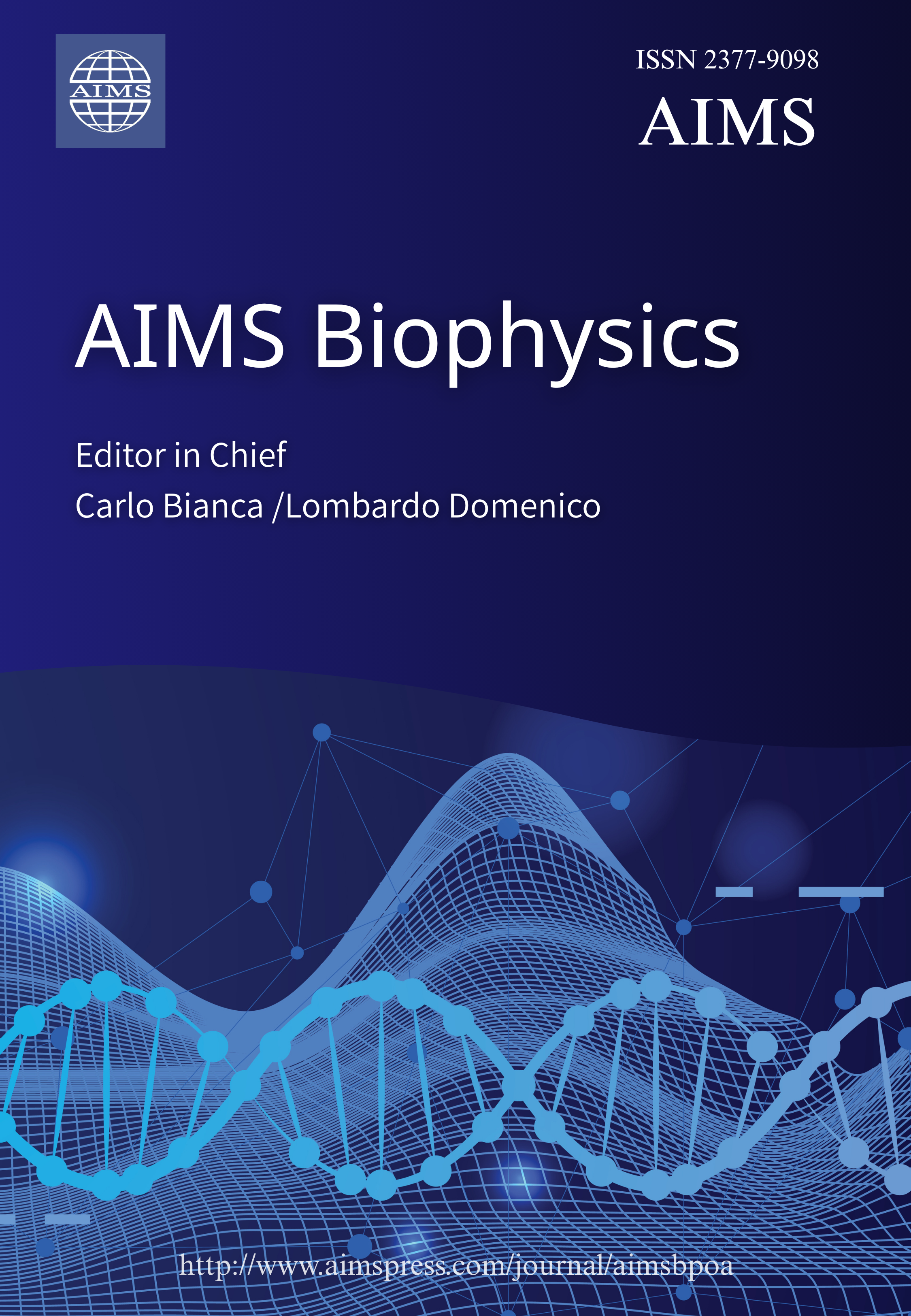
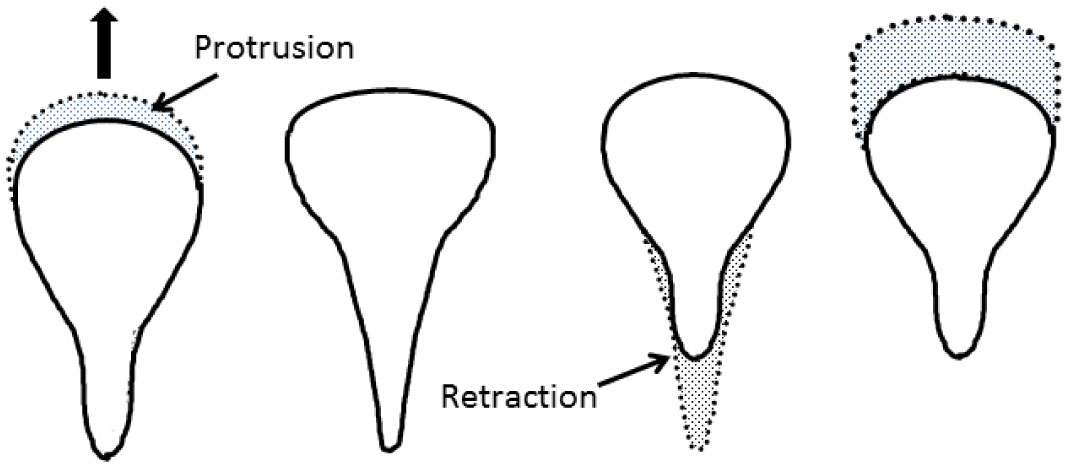
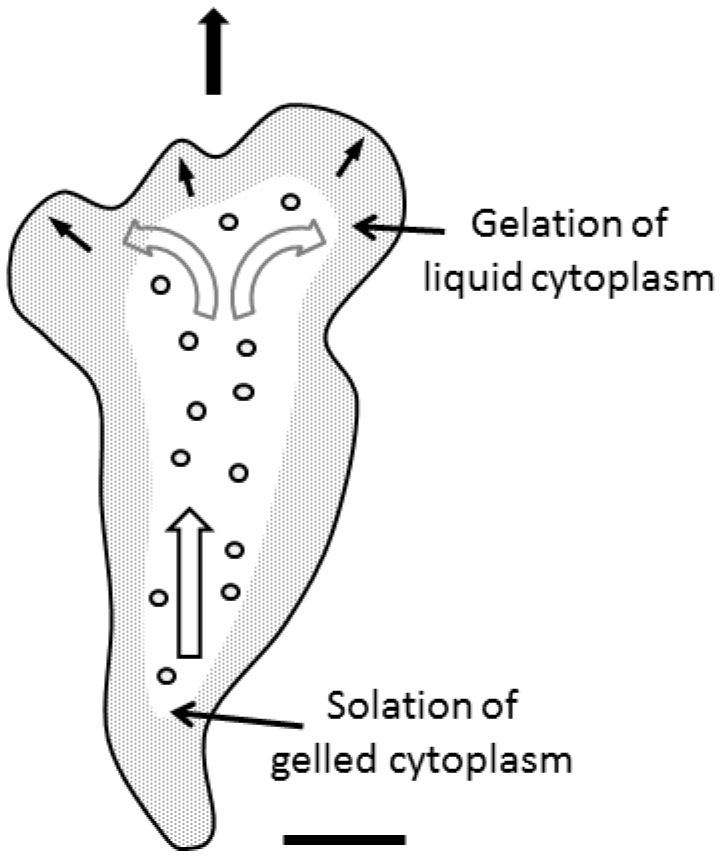

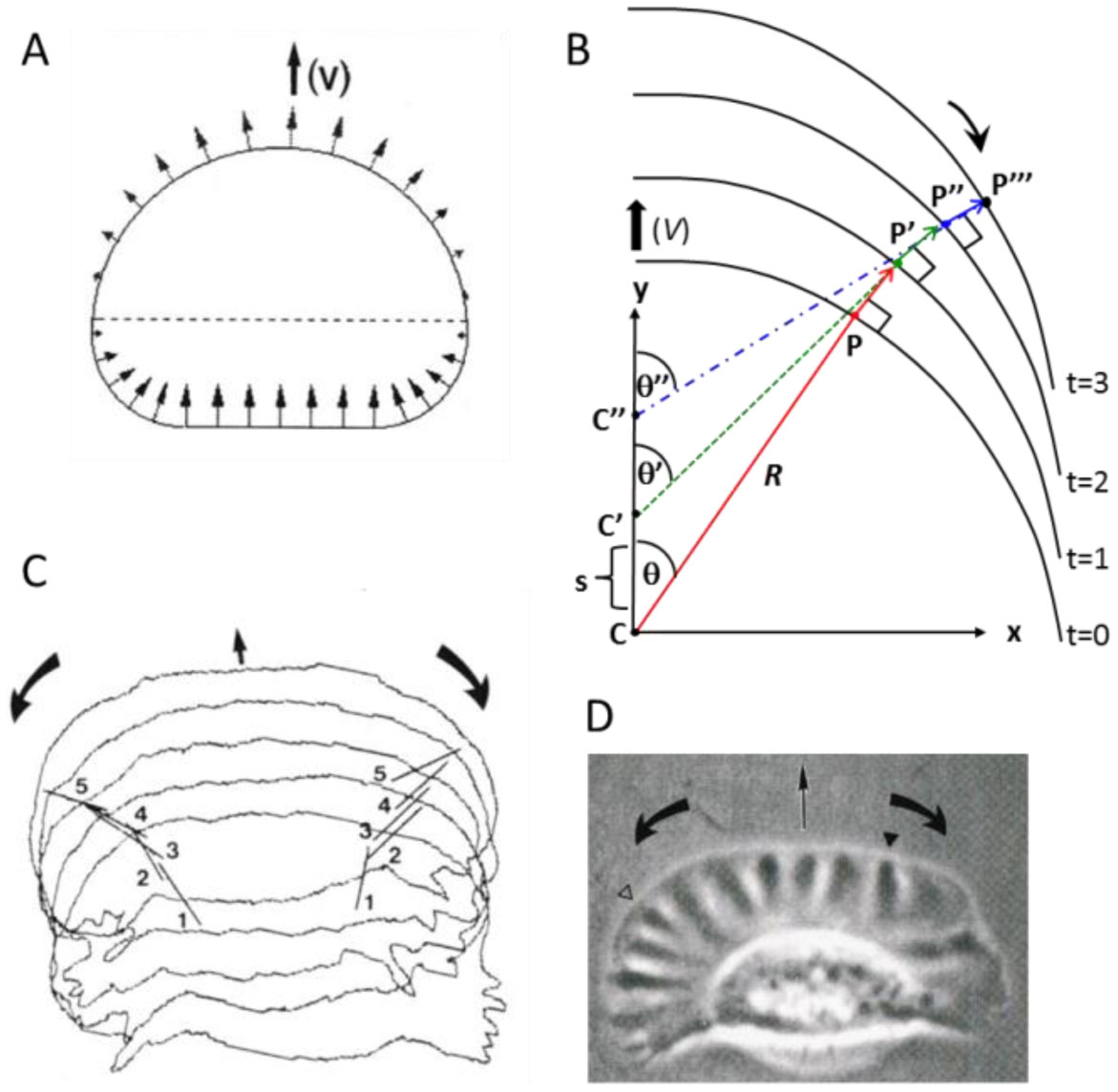

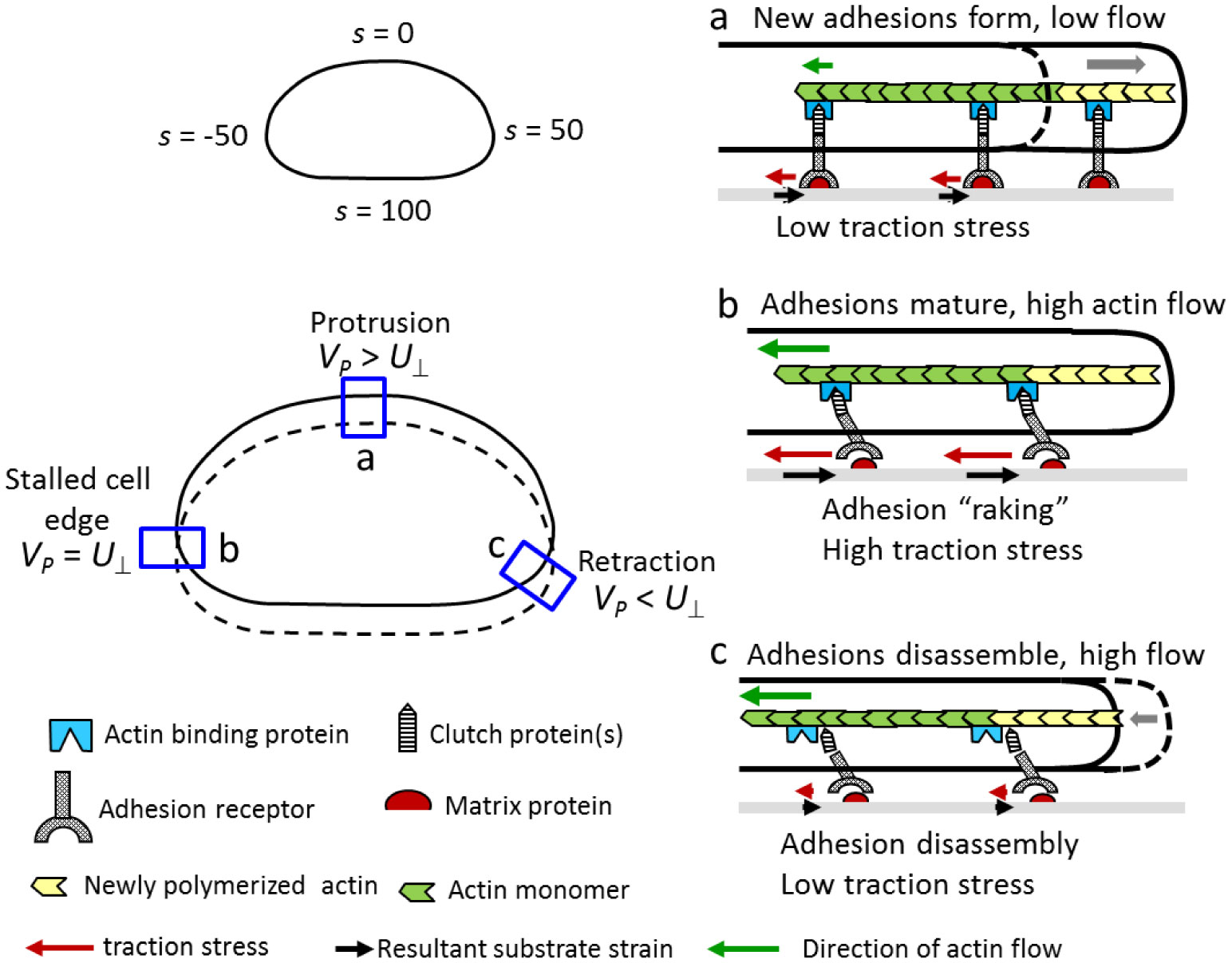


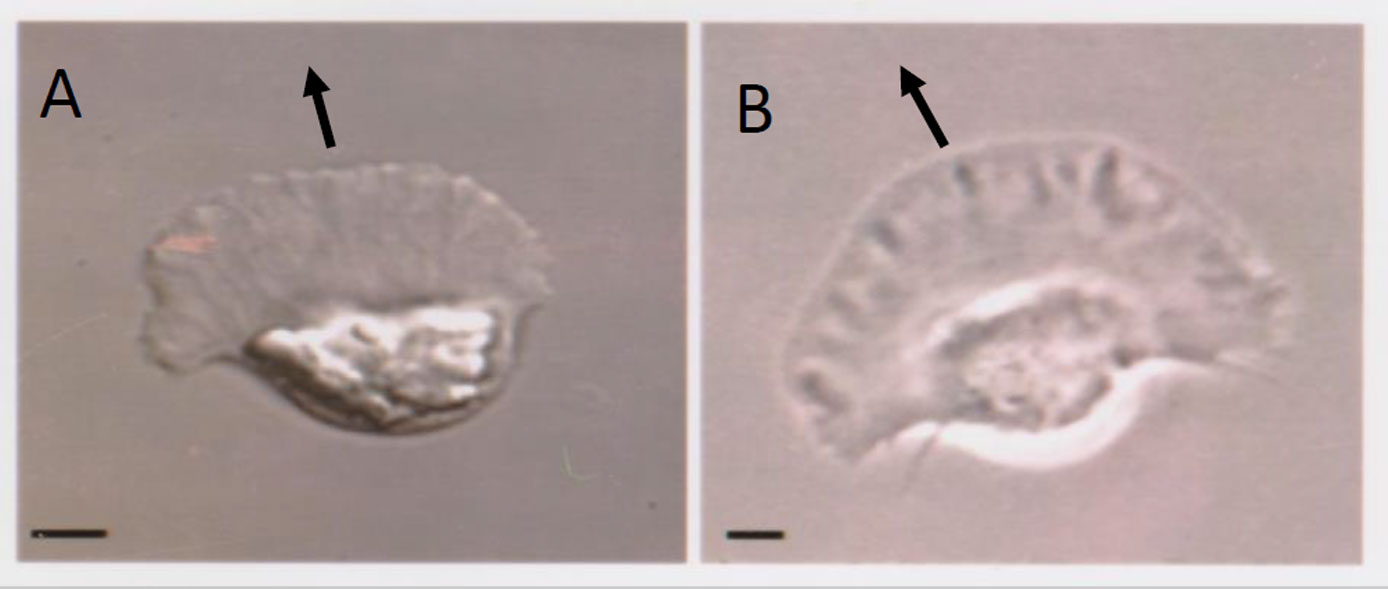


 DownLoad:
DownLoad: